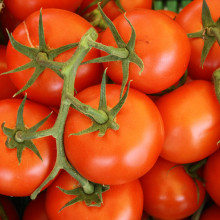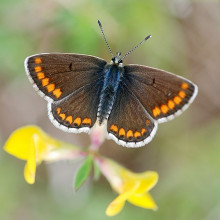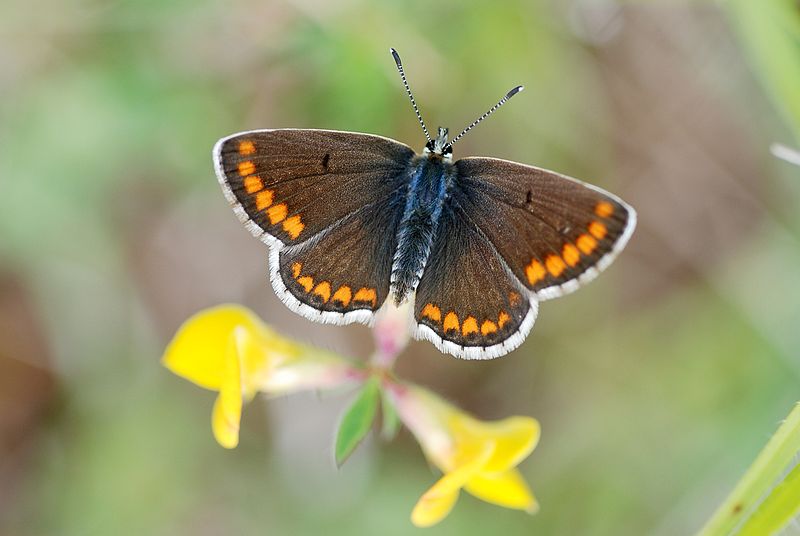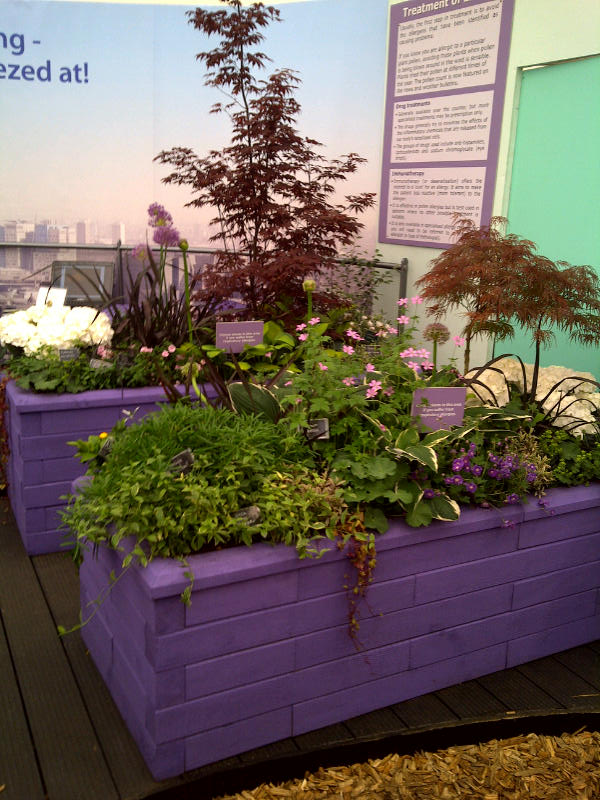What makes a perfect tomato? In this NewsFlash, we discover the compounds that comprise the tastiest tomato, and why modern agriculture is getting it wrong. We'll also hear why working shifts can alter fertility, and how to store data in DNA. Plus, the world's biggest radio telescope, the Square Kilometre Array, will be shared between South Africa and Australia, we find out what it means for the future of science in Africa.
In this episode

00:17 - Fertile findings from pregnancy and shiftwork study
Fertile findings from pregnancy and shiftwork study
A shiftwork-dominated lifestyle ruled by the clock could significantly affect fertility, new research has revealed.
 By jetlagging pregnant mice, Northwestern University scientist Fred Turek and his team found that, compared with controls, rodents subjected to regular shifts in their sleep-wake cycle, simulating a human doing bouts of nightwork, suffered a 40% birth-rate drop.
By jetlagging pregnant mice, Northwestern University scientist Fred Turek and his team found that, compared with controls, rodents subjected to regular shifts in their sleep-wake cycle, simulating a human doing bouts of nightwork, suffered a 40% birth-rate drop.
The work, published this week in PLoS One, also compared moving the body clocks of the mice backwards as well as forwards, finding that advancing the clock (leaving the animals short of sleep) had roughly twice the pregnancy impact of retarding the clock.
The researchers also highlight recent findings that the pregnant uterus as well as foetal tissues sync up their own internal chemical clocks with the body's main master clock, the suprechiasmatic nucleus based in the brain.
Disturbance to the circadian rhythm, they speculate, is therefore likely to also impact on the biochemistry of the uterus and foetus, increasing the risk of adverse outcomes. This, they say, warrants closer scrutiny in human subjects, particularly since there are now reports of individuals struggling to fall pregnant when subject to work patterns requiring regular reorganisation of the body clock.

03:00 - A new DNA-based memory chip
A new DNA-based memory chip
Researchers have developed a DNA-based memory chip for storing information inside cells...
It could be used to record data in a living cell, without using silicon chips like we do in computers. This could allow us to track cell divisions to study cell processes like development, ageing and the changes that occur in cancer.
DNA is directional, and now a team, led by Jerome Bonnet at Stanford University have found a way to encode information using enzymes that can flip small pieces of DNA between their normal direction, which acts as a 0, and the opposite direction, which acts like a 1. This means it can store one bit of data. And the process used is reliable enough to write and rewrite information again and again.
The researchers found that by using an enzyme called integrase, borrowed from a type of virus called a bacteriophage that attacks bacteria, they were able to chop out a small section of DNA, flip it over and stitch it back into the main DNA strand, changing its direction and therefore 'setting' the switch to 1 rather than 0.
Then by applying integrase again, this time along with another enzyme called excisionase, they were able to cut the DNA section out, flip it back to its original orientation, and stitch it back in again, 'resetting' it to 0.
It's then possible to read the data from the memory chip using different coloured proteins. When the DNA is in the 0 configuration, the green fluorescent protein or GFP gene is switched on, which makes the cell glow green. And when it's in the 1 configuration, RFP (red fluorescent protein) is produced, making the cell glow red.
This could be used to show when a cell had undergone a particular number of cell divisions, or if a particular gene had been switched on.
The enzymes used are both members of a group called recombinases, and the team have dubbed their data storage system the recombinase addressable data module, or RAD for short.
It's taken the group 3 years and 750 tries of combinations to get the RAD module right. One area where they had trouble was in finding the right balance between integrase and excisionase expression, to stop the DNA from being flipped between the two states without regulation. Eventually, they were able to engineer controllers for the 'reset' switch, to keep the flipping of the DNA regulated.
The next step for this way of storing data is not to work out how to increase the power up to a terabyte to find a new type of computer, but to get up to around 8 bits, or a byte. Drew Endy, one of the team working on this RAD system believes that the real power of it is that it can be used where silicon can't - inside living cells.

05:59 - Perfecting the Tastiest Tomato
Perfecting the Tastiest Tomato
Professor Harry Klee, Florida University
Now, to combat widespread public dissatisfaction with 'supermarket-perfect' tomatoes like mine - in other words, ones that look great but are deceptively bland and tasteless when you eat them - scientists have tracked down and published the cocktail of chemicals that need to be there to constitute a much more flavoursome fruit. Professor Harry Klee, from the University of Florida, explained to Chris Smith that it was his own displeasure at the inferiority of shop-bought tomatoes that motivated him to embark on the search for the perfect tomato...
Harry - If you're of a certain generation and you've grown your own tomatoes, or had access to them, you realise that some of them taste great and then you go to the store and they taste incredibly bland, and it's clearly a huge problem. It's the number one complaint in the US of consumers with regard to produce and so, yeah, it was a daunting task, but one that just cried out to be done.
Chris - So how did you approach this? Did you say, "well, the ones that are in the supermarket have been bred that way. Let's look upstream of that, at the ones that they came from, and see if we can put some of the flavours back?" How did you approach it?
Harry - Yeah, that's precisely it. Breeders over the years have worked very hard to give customers what they want. Unfortunately, their customers, or the growers just want more and more yield, and the growers are not paid for producing objects that taste good. So basically, the breeders have, through selection over the last 50 or more years picked out varieties that have really high yields but have absolutely no taste. And so, if you go back to the pre-intensive breeding periods you have what in the US we call "heirloom" tomatoes - varieties that have been around for a hundred years or more which have fabulous taste. They're not very farmer friendly. You get very poor yields, they're very susceptible to diseases, but they taste great. So you know that out there, there's a massive reservoir of really good tasting material and so, the trick was in our case, to go back to that material that preceded the intensive breeding, and understand what is good flavour.
Chris - How did you do that? Did you literally put samples of these hundred plus species of heirloom tomatoes in front of tasters and say what's good, what's bad?
Harry - That's exactly what we did. We're now up to about a couple of hundred different varieties that have vastly different chemical profiles and vastly different tastes. Some of them are outstanding, some of them really aren't very good, and you wonder why people grew them in the first place. But that incredible diversity that's out there gave us this opportunity to do a big test where we could take upwards of a hundred of more varieties.
Basically, we gave them to a large consumer panel and said, "What do you think of them?" And then we took samples of those and ground them up, and determined what chemicals related to flavour were in each of them and basically, you can take all of that massive amount of data of chemistry and consumer preferences, and through statistics, you can extract out what's in the good ones and what's in the bad ones. And in theory, you can put together a recipe for the ideal tomato.
Chris - So, you screen them across all these people, you see trends emerging where certain combinations of chemicals appear to associate with people saying, "This is very nice. It tastes very nice. It's nice and sweet. That's what I like." Other chemicals seem to be less important. You hone in on what those chemicals are. Do you now know then exactly what constitutes the ideal tomato in terms of its chemistry?
Harry - The simple answer is yes. The more complex answer is, there are still differences with people in terms of what individuals like. And so, the way I like to describe it is to say, we can optimise for the chemical composition of a great tasting tomato. It won't necessarily be everybody's favourite, but I think everyone would say it's right up there with the very best. Certain individuals might like something that's a little sweeter. Some individuals like some that's a little more acidity to them, but by and large, yes, we can extract out the recipe for a great tasting tomato.
Chris - And would the idea be then that you can now rationally breed strains of tomatoes, going back to those heirloom strains and selecting out chemically the ones that have the right biochemical proportions of these chemicals, breed from those and then slowly, arrive at one that does have good shelf life in 'supermarket-friendly' characteristics but also, blends in a lot of these other important flavourants?
Harry - Yeah, that's exactly the approach. I mean, unfortunately, until a large commercial grower is paid to produce something that tastes really good, we have to work within those constraints at the commercial level. We have to have a tomato that really does produce high yield, and really is resistant to all the diseases the farmer encounters. But by going back and knowing the specific chemistry of what is great tasting, and we know that the genetics is there within the heirloom populations, we just have to go back and recapture it and that's going to take time because of those constraints of yield and disease, and shelf life, but I think we know how to do it. We basically have provided the road map for what genetics we need to combine to get the product that tastes good.
Chris - So ironic that modern day breeding gave us something we don't like and we're now having to go back to what people have done originally to put it right. But tell us then what are the important chemicals you found that constitute the perfect tomato and were there any surprises?
Harry - Yes, there were. I mean, number one is sugar. We know that people, through genetics over eons, have been selected for picking out things that have lots of calories. So sugar is really the number one, but beyond the sugar, you very quickly get compounds which are the smell components, the volatile chemicals that we smell, and there are a few of those that are really important. They're actually the chemicals that are related to the same compounds that give the fruit colour - from the carotenoids. There are carotenoid breakdown products that are very, very strong contributors to flavour and they really make a huge difference in terms of preferences.

13:23 - The Square Kilometre Array
The Square Kilometre Array
Bernie Fanaroff
This week, the decision was finally made about where the most powerful telescope has ever been conceived will be built starting in 2015.
Australia and South Africa have both submitted rival bits to host the
Square Kilometre Array, the SKA, this is a multi-billion pound network of over 3,000 radio dishes that will enable scientists to see further into the universe's history than we've ever seen before. This week though at a meeting in the Netherlands, it was decided that rather than award it to just one, both countries would end up hosting parts of the telescope. Bernie Fanaroff is the Director of the South African bid and he was at that meeting.
Bernie - We're very happy indeed. We would obviously have liked to have the entire SKA in Africa, but once the Square Kilometre Array site advisory committee recommended Southern Africa as the signal site, it became clear that many of the members of the SKA organisation wanted to keep Australia in the project and asked for a small team of scientists to see whether there were any ways in which parts of the telescope could be built in both continents which would be both viable in respect of costs, and would not detract from the science. So they came back with some options and at the meeting yesterday in Amsterdam, the SKA organisations board took a decision that the low frequency array, what's called 'sparse array', would be built in 
' alt='Artist's impression of the 5km diameter central core of SKA antennas.' >Australia and the dishes, and the aperture array would be built in Africa.
Chris - And spreading the telescope out not just across two countries but two continents, there's an ocean in the middle, does that in any way alter the way in which the project has to be operated or does actually spreading them out in this way strengthen things?
Bernie - In the first stage, it will allow us to do more science for pretty much the same amount of money. In the second phase, we still have to go through a very intensive period of system engineering, and technology down selection and so on before we can make accurate estimates of the cost, but I don't expect the cost of operating the two sites to be restrictive. As far as the science is concerned, what we'll do is analyse the data from each of the three arrays, pretty much at the site themselves. So, what will be transmitted to science centres around the world is already concentrated down by the high performance computing centres.
Chris - The fact that this is coming to South Africa, it could not have done, it could've ended in Australia, what does this mean to southern Africa?
Bernie - Well, I think first of all it's a recognition that southern Africa can do it. I don't think that a lot of people would've seen South Africa and Africa as a possible centre for high tech and leading mega science. So, it's really a way of changing the world's perception of what we can do and also of course, it changes our own perception of what we can do. We've already seen that a lot of enthusiasm over the meerkat, lots of young people coming into science and engineering, over 400 growing since 2005, young people from all over Africa, and we've seen a lot of very, very good young researchers coming from Europe and North America, and other places to work in South Africa. So, we expect that'll increase. Hopefully, what we'll be able to do is to reverse the brain drain.

17:31 - Butterflies on the move with climate change
Butterflies on the move with climate change
Changing climate has caused range shifts in many species, altering the area they are able to survive over. It is not as simple however as species being able to just move to warmer or cooler areas as the climate shifts. Constraints like limits on dispersal, and dependence on other species for food or shelter (particularly plants) can limit a species' ability to shift.
Now research led by Rachel Pateman from the University of York, and publishing in the journal Science has shown that increasingly warm summers in the UK have allowed the northwards expansion of the range of a species of butterfly by allowing it to use a wider range of host plants.
 The brown argus butterfly, Aricia agestis, is at the northernmost boundary of its range in Britain, and is also found on the Continent, in warmer climates. It requires a sufficiently long, warm summer to have enough time for the eggs laid at the start of the summer to hatch into larvae and eat enough before pupating over winter.
The brown argus butterfly, Aricia agestis, is at the northernmost boundary of its range in Britain, and is also found on the Continent, in warmer climates. It requires a sufficiently long, warm summer to have enough time for the eggs laid at the start of the summer to hatch into larvae and eat enough before pupating over winter.
Historically, argus females have laid their eggs primarily on the common rock rose. These plants are generally only found in grassland on south-facing slopes, which are the warmest type of microclimate found in the British Isles. The restriction of the butterflies to using this species is most likely down to this warmer microclimate effect and not down to any innate female preference or due to larvae growing better - because the team tested these exact conditions between rock rose and another plant the butterflies occasionally used, called dovesfoot cranesbill. In fact, it was shown that the larvae actually grow better on the cranesbill plants.
By analysing climate data and observational data of argus butterflies, the team have found that the increased frequency of warm summers over the past 20 years has coincided with an increased use of dove's foot cranesbill by the butterflies. And because cranesbill grows far more widely than does rock rose, the range of the butterflies has expanded, spreading north by nearly 80km in those 20 years - more than twice as fast as would be expected from the global mean.
Another factor that may have allowed the population of argus butterflies to increase is that the shift in plant species has allowed the butterflies to escape from harmful parasitoids - organisms that act like parasites on their hosts, and then ultimately kill them.
So while this is good news for the argus butterfly, it's unclear what the impacts could be on the ecosystems they are now managing to exploit. They might end up outcompeting other species that rely on these cranesbill plants, or transfer diseases or parasitoids to new hosts.
But the important point from this story is that interactions between species don't have to be constraining factors when climate change causes range shifts, but can actually allow species to expand their range.

21:48 - Private Space Missions, Atlantic Swims and Jubilee Diamonds
Private Space Missions, Atlantic Swims and Jubilee Diamonds
Charles Bolden, NASA; Ben Fogle; Peter Furness, Royal College of Pathologists, Graeme Jones, University of Keele
Space X Launch
The first cargo delivery to the International Space Station by a private company was successfully launched this week by California-based Company 
Space-X.
The Falcon 9 rocket took off from NASA's Cape Canaveral air force station in Florida on Tuesday 22nd May carrying the Dragon capsule containing non-essential supplies of meal packets, a laptop, clothes and some student experiments, which rendezvoused with the space station on Friday.
The successful return of Dragon back to Earth once it undocks at the end of the month will lead to an official contract for the company to fly 12 cargo missions to the space station.
NASA's Charles Bolden comments.
Charles - The significance of this day cannot be overstated. A private company has launched a spacecraft to the international space station. We're now back on the brink of a new future. A future that embraces the innovation the private sector brings to the table, and a future that opens up the skies to endless possibilities. Congratulations to the SpaceX and NASA teams, and Godspeed Dragon.
---
Using the Human Body to Monitor Ocean Pollution
British adventurer Ben Fogle announced plans this week to take to the
Atlantic to swim over 3000 miles from North America to Cornwall in summer 2013.
As part of the expedition, Fogle will become a human research vessel carrying micro-sensors on his body to monitor marine temperatures, dissolved gases and algae in the thin surface layer of the ocean as he swims providing researchers at the National Oceanography Centre in Southampton with a greater insight into the air/sea interface and the general state of the ocean...
Ben Fogle. - There's all sorts of exciting possibilities to use technology, to use me. I'm going to be out there doing this ridiculous challenge that's going to be hard enough anyway and the more useful it can be to people, the more of a drive it will be for me to keep on going. To date, everyone has felt that our oceans are unpollutable. Well, that's not true. The net results of all that pollution and the overfishing, it's a cyclical effect that will have catastrophic effects in the long term. I think the more people that can just raise awareness of what we're doing, the better it will be for all of us.
---
Using Plants to Relieve Allergies
 Urban gardens designed to prevent allergy flare-ups in hay fever sufferers have been displayed at the
Urban gardens designed to prevent allergy flare-ups in hay fever sufferers have been displayed at the
Chelsea flower Show in London this week.
The exhibit, hosted by the
Royal College of Pathologists, displayed two rooftop gardens similar in appearance but with one containing pollinating plants such as lavender and ferns that trigger hay fever and the other sterilised or insect-pollinating plants such as hydrangeas or Japanese Maple.
The exhibit raised awareness of the allergies such as hay fever, which affects 20 to 30% of the UK population, as gardens in densely populated, urban environments become more popular.
Peter Furness is former is the college's former president...
Peter - Greening the urban environment is fantastic, but if you're going to do that, it's probably a good idea to be aware of the consequences you could have on the health of all the people living nearby and respiratory allergies are a growing problem. You can have a beautiful garden with, or without, respiratory allergies depending on whether that's a problem for you. There's quite a few people producing vertical green walls, it seems to be quite fashionable, and we've had them coming around saying, we need to think about this. We're putting these green walls of plants really in your face in an urban environment, and they need to realise it might be a problem.
---
The Jubilee Diamond
And finally, the
largest model of Diamondin the world is being built by scientists at the University of Keele, in celebration of the Queen's Jubilee.
Standing at 2m in height and 1.8 metres in width, the octahedral structure uses 35,990 transparent balls representing the carbon atoms that make up diamond held together by over 70,000 sticks acting as the covalent bonds between them.
The model will be unveiled just in time for the Jubilee in the central marketplace of the town of Uttoxeter in the UK.
Graeme Jones is leading the project.
Graeme - So we're going to build the largest model of diamond in the world and we wanted to get a Guinness World Record, and that's forced us to go to this humongous size. So we've been working with lots of schools around the local area and local people in the town centre, putting the model together. It should hopefully be unveiled on the 2nd of June.
So look out for the Diamond if you pass through the town of
Uttoxeterduring the jubilee weekend.
Related Content
- Previous How Intelligence Happens
- Next Making a Meal out of Microbes










Comments
Hey, this might be off topic,
Hey, this might be off topic, but where did you get the Html template for the web site? Thank you!
We designed it and built it
We designed it and built it ourselves!
Add a comment